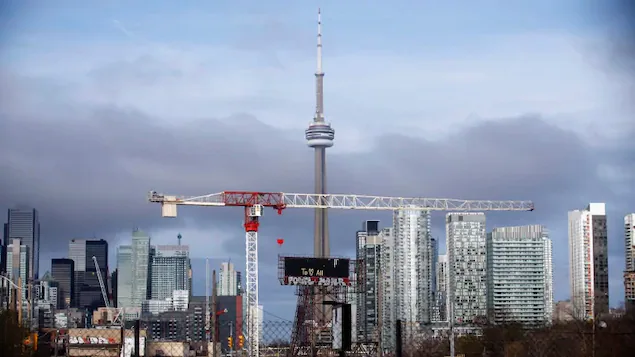The provincial election is now just mere days away, and housing affordability remains a top-and-center issue for voters. Each major political party has factored this heavily into their platforms, proposing a slew of new measures focused on both the demand and supply sides of the housing market.
While there are clear motivations behind each platform — for example, the incumbent PC party would ramp up pressure on the municipal development approval system to push builds through faster, while the Liberals and NDP have each vowed to beef up existing rent control — the big three are all aligned on a pledge to build 1.5M new homes over the next decade.
That finally addresses “the elephant in the room” that the province’s builders have pointed to for years, says Bob Schickedanz, President of the Ontario Home Builders’ Association (OHBA).
“At the outset, what is important to recognize is that all the major parties have recognized what I call the depths of the housing crisis or housing shortage,” he tells STOREYS.
“So that’s good, certainly, in terms of a starting point, to identify what the issue is. Then it really comes down to — now we’re in an election cycle — what do we do to address this problem? What measures can be undertaken to ramp up the creation of the homes we need? And it’s all types of homes, it’s rental units to small condominium units, all the way up the scale to single-family homes for growing families that need that space, or are fortunate enough to have the opportunity to buy something like that.”
“If You Can’t Flush the Toilet, You Can’t Build the House”
However, Schickedanz says, the logistical hurdles to actually creating said new supply — and the required supporting infrastructure — remain unaddressed by current political proposals. While the province’s supply shortage didn’t accumulate overnight, he adds, the pandemic magnified and accelerated the issue, especially in smaller communities that saw a surge of out-of-town interest once COVID lockdowns took hold. Another challenge is the dwindling workforce, as more than 100,000 skilled construction trade workers are set to retire over the next decade, and the several short-term strikes currently taking place in the residential building sector.
“Now, we’ve heard from various parties that they’re going to build more homes — but there seems to be a lack of clarity in terms of who exactly is going to be doing the building. It’s great to espouse that we need these units and we’re going to make sure we build those, but really, how is that going to be accomplished because, realistically, we’ve come to this state not overnight, but it’s been gradual over a period of time,” he says.
“Housing has become less affordable, people have been driving until they qualify in remote communities and those remote communities are ill-equipped for the most part to see this rush of demand happening. For them to pivot and incorporate this growth has become very challenging in terms of the approvals that are required.”
And, as their populations bulge, many of these smaller communities are facing steep price tags to upgrade their existing supporting infrastructure — such as sewer and water capacity — that are beyond their ability to finance. That creates a considerable roadblock to bringing promised new housing online — as Schickedanz puts it, “if you can’t flush the toilet, you can’t build the house.”
Challenges Not an Argument Against “Bold Action”
However, Schickedanz adds, such challenges aren’t an argument against taking a dramatic policy approach, given how desperately new units are needed in every corner of the province.
“There may ultimately be some gaps that do occur, but that doesn’t give cover to not taking bold action on all those fronts,” he says. “I think the best outcome for individuals and families looking for a place to live, is lots of choice there, that they can go into communities and say, “I want to live here or there.’ Right now that is just nonexistent, which is troubling.
“In the past couple of months, I’ve been crisscrossing the province with the OHBA’s advocacy campaign and listening to the people in those communities about what they’re experiencing. And maybe I shouldn’t be, but I’m really shocked that every corner of the province, be it Sarnia, Sudbury, Ottawa… this isn’t just a GTA-centric problem.”
The “biggest thing” an incoming government could put in place, Schickedanz says, is a realistic overhaul of the timelines, standards, and approvals builders must currently go through during the application and creation process.
“Right now we have a real patchwork of stakeholders involved: local municipalities, regional governments, a number of provincial ministries, school boards — and they’re all running on their different paths. There are no real strings to tie it all together, and hence it takes a long period of time,” he says. An ideal scenario, he adds, would be one with a streamlined process with clear timeframes and accountability.
“I want to reinforce that whatever measures any party proposes — and some touch on the demand side, taxing additional homes, investors and things like that — perhaps those measures will have some effect, I don’t know to what degree. Our members and our industry are focused more so on supply, more choice, of every type and kind of housing, in communities across the province, and, ultimately, what would be wrong when we account for more housing and say, that’s all to the benefit of Ontarians looking for a house. And the quicker we can get to that point, where we have the supply and choice to address what’s happening, it’s going to have some meaningful impact on affordability and the communities we ultimately live in.”
